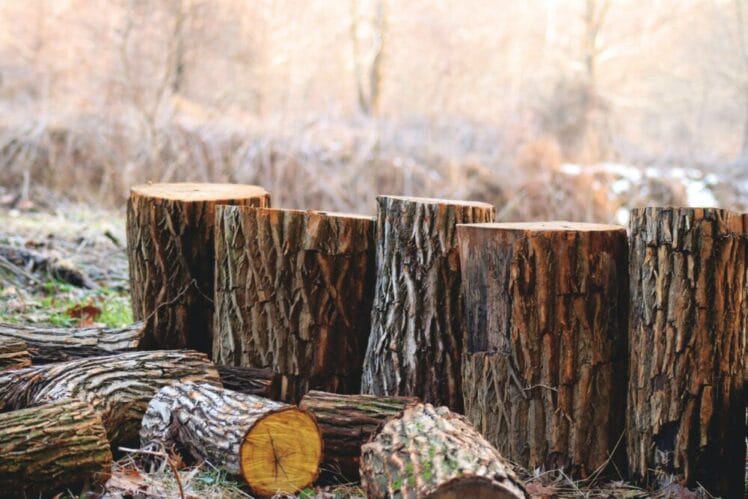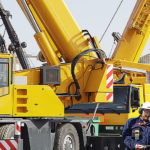
Tree removal services play an integral role in maintaining the safety, aesthetics, and health of our surroundings. While trees are undeniably valuable for environmental reasons and landscape beauty, there come times when removing a tree becomes inevitable. This decision, while essential, often comes with financial implications. The costs associated with tree removal can vary significantly, and understanding the factors that influence these costs can help homeowners and property managers budget more effectively for such services.
Size and Complexity of the Tree
One of the most obvious factors influencing the cost of tree removal is the size of the tree. Naturally, larger trees require more labor, time, and equipment to remove. But it’s not just about height; the breadth and complexity of the tree’s branching structure can also play a part. A tree with many sprawling branches, for instance, may need more intricate work, even if it isn’t particularly tall.
Location and Accessibility
Where a tree is situated can heavily impact the cost of its removal. Trees close to structures, power lines, or other obstacles demand greater care during the removal process to ensure safety. If a tree stands in a location that’s hard to access, perhaps in a tight corner of a yard or behind a structure, the removal process becomes more challenging. Such trees might require specialized equipment or extra labor, thereby increasing costs.
Tree’s Health and Stability
The overall health of a tree is another vital factor. Trees that are dead, diseased, or infested might be unstable, making them potentially more dangerous to remove. Such trees may require additional precautions, equipment, or even more skilled labor, which can influence the overall price. On the contrary, a healthy tree, while robust and dense, might be easier and more straightforward to remove.
Emergency Situations and Their Implications
Sometimes, situations arise where a tree poses an immediate threat, necessitating emergency tree removal Potomac. This could be due to storm damage, sudden disease outbreak, or other unforeseen circumstances. Understandably, emergency services can come with a premium price. The need for quick action, potential out-of-hours work, and the urgency of the situation can all contribute to higher costs.
Post-Removal Processes
After the main process of tree removal, several post-removal tasks might influence the final cost. These include stump removal, disposing of the tree, and cleaning up the area. Some homeowners might choose to keep the stump for aesthetic or functional reasons, while others might want it removed. Stump removal, especially if grinding is involved, adds to the overall cost. Disposing of a large tree can also be an extensive task, incurring additional charges.
Professional Expertise and Equipment
The expertise of the professionals carrying out the removal can influence the cost. Highly experienced professionals might charge more, but their expertise ensures a safer, more efficient process. Additionally, the kind of equipment used, whether it’s standard chainsaws or more specialized machinery, can factor into the overall price.
Seasonal Considerations and Pricing
Different seasons can impact the cost of tree removal. For instance, winter might offer reduced rates in some regions since it’s typically a slower season for tree services. Conversely, post-storm seasons or peak fall months might see a surge in demand, leading to higher service prices. It’s essential to factor in seasonal variations and potentially time your tree removal during off-peak months for cost savings.
Permit Requirements and Local Regulations
In many municipalities, you can’t simply decide to cut down a tree without the necessary permissions, especially if the tree is on public property or if it’s a protected species. Obtaining these permits comes with its own set of fees. Moreover, some localities might have specific disposal requirements for removed trees, ensuring they are recycled or repurposed, which can further influence the total cost.
Insurance and Liability Factors
When hiring a tree removal service, it’s not just the direct removal costs you should consider. It’s crucial to ensure the service you hire is insured. While this might sometimes mean a slightly higher quote, it provides protection against potential damages to your property or injuries during the removal process. An insured service gives peace of mind, knowing that you’re not financially liable should any mishaps occur.
Long-term Implications and Landscape Rehabilitation
Once a tree is removed, the landscape undergoes a significant change. The area previously occupied by the tree might require rehabilitation, be it planting a new tree or restructuring the landscape. Such processes come with their own costs. Additionally, if the removed tree provided shade, homeowners might experience a sudden increase in cooling costs during summer months, an indirect cost tied to the tree’s removal.
Estimation Methods and Site Surveys
Before any tree removal process begins, professionals often conduct a site survey. This assessment allows them to gauge the complexity of the job and provide a more accurate cost estimate. It involves looking at the tree’s location, proximity to structures, and potential hazards. While many tree services offer free estimates, some might charge for a detailed site survey, especially if it involves larger properties or multiple trees.
Multiple Tree Discounts
If you’re considering the removal of multiple trees, there’s a possibility of getting a discount. Many tree removal services offer reduced rates when engaged for more extensive projects. This is because the company can optimize labor and equipment deployment over a larger job. It’s always wise to inquire if such discounts are available, especially for substantial landscaping overhauls.
Cost of Delay: The Rising Expenses of Waiting
Delaying tree removal, especially if a tree is diseased or structurally unsound, can lead to increased costs down the road. As the tree continues to deteriorate, it can become more unstable and challenging to remove safely. Additionally, a diseased tree can spread its affliction to nearby trees, which could lead to more extensive future removals or treatments. Addressing tree issues promptly can often lead to more economical and safer removal processes.
Alternative Services: Trimming vs. Removal
In some cases, full removal might not be the only option. Tree trimming or pruning can sometimes address the issue, especially if specific branches pose risks. While trimming is generally less expensive than complete removal, it’s essential to weigh the long-term implications. A tree that’s frequently trimmed for safety reasons might eventually cost more in repeated trimming services than a one-time removal.
Post-Removal Maintenance and Care
Once a tree is removed, the care isn’t necessarily over. The remaining soil, especially if a stump is ground down, might need specific treatments to be suitable for future planting. Moreover, if homeowners aim to plant a new tree in the same spot, they might require soil testing and amendment services to ensure the ground is fertile and healthy for new growth.
Conclusion
While trees add beauty, shade, and value to properties, their removal is sometimes necessary. When faced with the decision to remove a tree, understanding the various cost factors involved helps in making an informed financial decision. Whether it’s a planned removal or an emergency situation, consulting with professional tree cutting services Kensington will provide clarity on costs and ensure the tree’s safe and efficient removal. By delving into the intricacies of these costs, homeowners can navigate the tree removal process with confidence and clarity.





